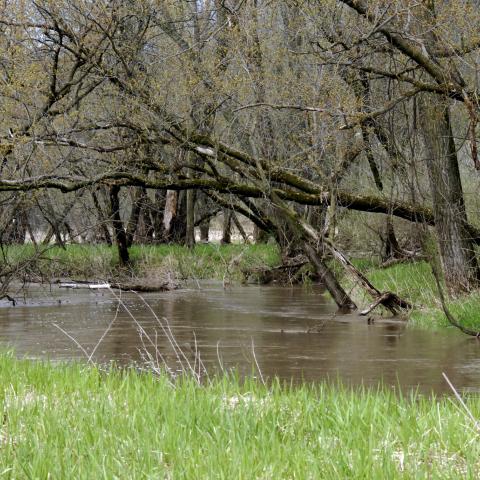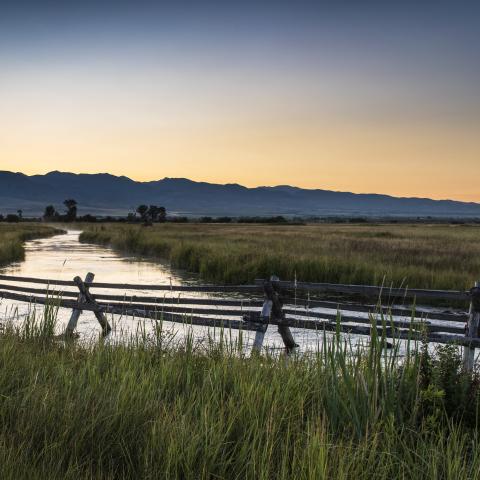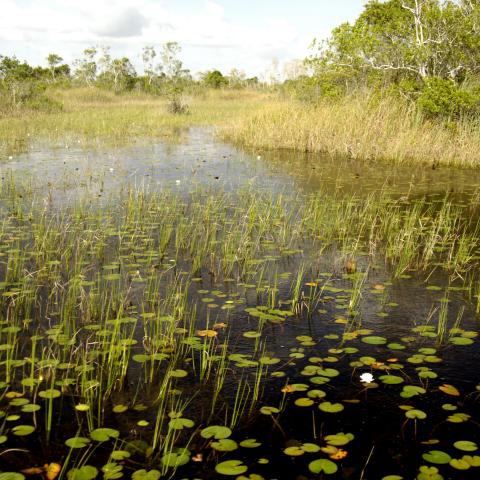
The Food Security Act’s wetland conservation provisions were enacted to assist in protecting the values, acreage, and functions of the Nation's wetlands.
To participate in most United States Department of Agriculture (USDA) programs, agricultural producers agree to comply with the wetland conservation provisions, which means producers will not farm converted wetlands or convert wetlands to enable agricultural production.
Wetland Determinations
Agricultural producers may request a wetland determination that locates and certifies the existence of wetlands subject to the 1985 Food Security Act on their land. A new activity that improves or creates drainage, land levels, fills, clears land, or conducts excavation will prompt an update to Form NRCS-CPA-026-HELC ("Highly Erodible Land Conservation (HELC) and Wetland Conservation (WC) Certification." ) On the producer’s behalf, The Farm Service Agency (FSA) will seek technical assistance from the Natural Resources Conservation Service (NRCS) to identify wetlands subject to the conservation provisions. NRCS, through field inspection or by using a variety of remote technical resources, develops a preliminary technical determination and issues Form NRCS-CPA-026-WC ("Highly Erodible Land and Wetland Conservation Determination”) and associated map to the producer for review. The participant may appeal for a reconsideration of the preliminary technical determination and provide additional information at the field review before it becomes final. Learn more about Technical Determinations and Appeals.
How to Remain Compliant with Wetland Conservation Provisions
Program participants who know or believe wetlands subject to the conservation provisions exist on their property may farm these areas when conditions permit but may not convert the wetland through draining, filling low spots, or clearing woody vegetation.
In situations where drainage was constructed in or near a wetland before December 23, 1985, the drainage may be maintained to the scope and effect of the drainage as originally constructed. Any additional drainage which would increase production, or allow the wetland to be farmed in additional years would be a potential violation of the provisions
If avoidance of certified wetland is not possible, program participants may elect to:
- Mitigate the wetland by compensating for the lost values, functions and acreage through wetland creation, restoration or enhancement within the same watershed. Mitigation sites may be created or restored on-farm, on another’s land, or on land held by a mitigation bank.
- Request a minimal effect determination from NRCS. If the planned activity has minimal or insignificant effect on wetlands, the alteration would not require mitigation.
If a wetland was converted after December 23, 1985 it cannot be used for commodity crop production in order to retain USDA program eligibility. A converted wetland is not subject to the wetland conservation provision if it is planted to an non-agricultural commodity, a crop which does not involve annual tilling of the soil (such as an apple orchard or grape vineyard).
If wetland drainage activities are not subject to the 1985 Food Security Act, they could be subject to the Clean Water Act or other State or local regulations. Producers should contact the local Army Corps of Engineers office to determine if a Section 404 Clean Water Act Permit is needed or their state or local agency offices to determine if any regulations apply.
Still have questions? Contact your local USDA Service Center.
Opportunities for Wetland Conservation
Agricultural producers may also seek USDA technical and financial assistance to restore and/or conserve wetlands through the following voluntary programs:
- NRCS’ Agriculture Conservation Easement Program (ACEP) offers wetland reserve easements to secure wetland values for 30 years or perpetually. NRCS assists the landowner to restore the wetland functions and values, while providing compensation for land enrollment in a long-term easement.
- NRCS’ Environmental Quality Incentives Program (EQIP) provides financial and technical assistance through conservation program contracts to reimburse the cost of implementing conservation practices for agricultural wetland enhancement.
- FSA’s Conservation Reserve Program (CRP) enrolls wetlands in annual rental payments for up to 15 years. Participants agree to take the land out of production and complete restoration practices prescribed in the contract.
Additional Information
Wetland Determination and Delineation
The Food Security Act of 1985, as amended, requires NRCS to delineate, determine, and certify wetlands located on land on a farm or ranch subject to wetland conservation (WC) provisions in order to establish a producer’s eligibility for certain USDA program benefits (16 U.S.C. Section 3822, 7 CFR Section 12.30).
Conservation Compliance Appeals Process
In the event participants do not agree with an NRCS decision, they are afforded various appeal rights. These appeal options will be detailed in the transmittal letter when you receive the preliminary technical determination.
Learn MoreConservation Technical Assistance
Conservation Technical Assistance (CTA) provides our nation’s farmers, ranchers and forestland owners with the knowledge and tools they need to conserve, maintain and restore the natural resources on their lands and improve the health of their operations for the future.
Learn More




